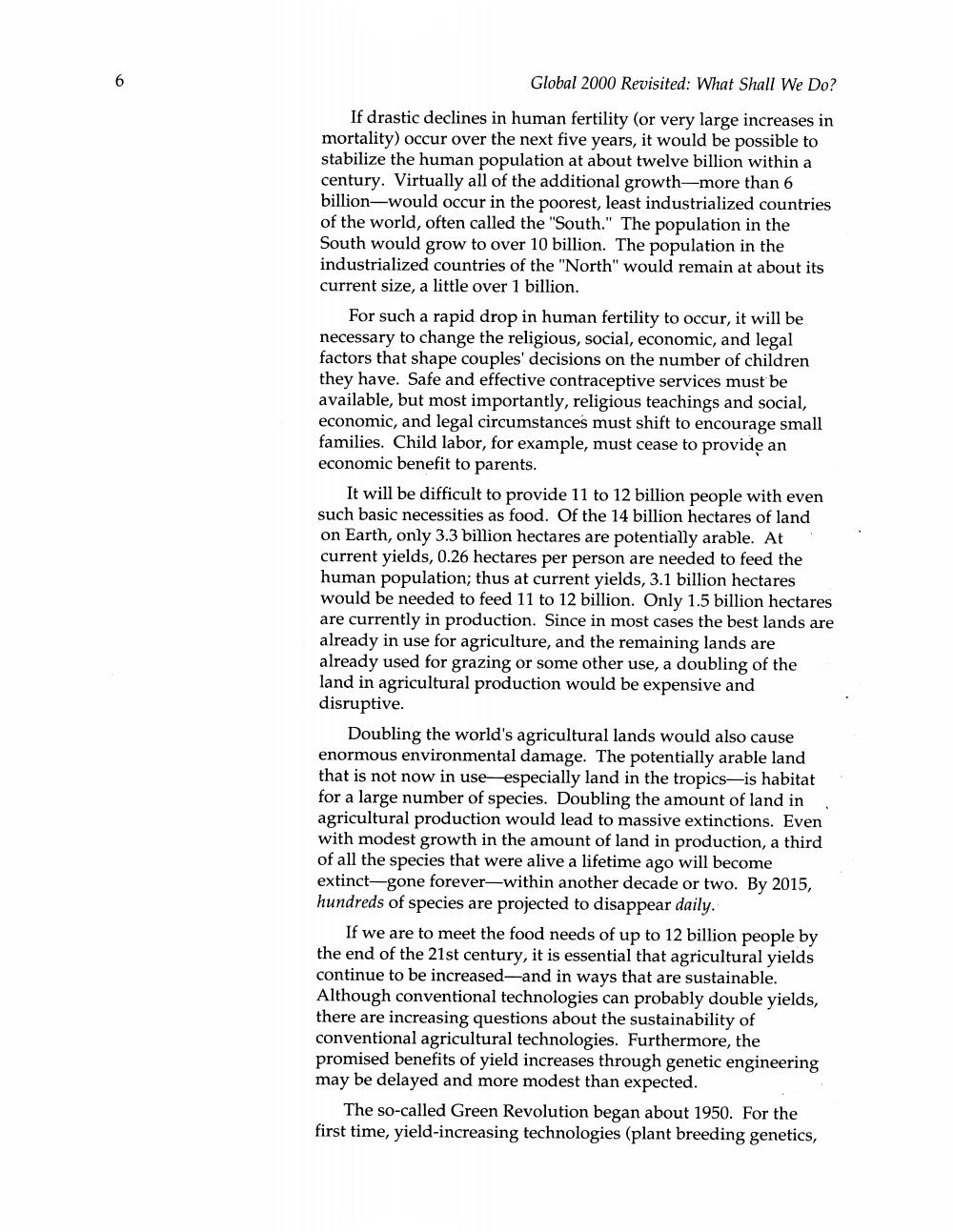Book Title: Letter To Our Spiritual Leaders Author(s): Publisher: View full book textPage 5
________________ Global 2000 Revisited: What Shall We Do? If drastic declines in human fertility (or very large increases in mortality) occur over the next five years, it would be possible to stabilize the human population at about twelve billion within a century. Virtually all of the additional growth more than 6 billion--would occur in the poorest, least industrialized countries of the world, often called the "South." The population in the South would grow to over 10 billion. The population in the industrialized countries of the "North" would remain at about its current size, a little over 1 billion. For such a rapid drop in human fertility to occur, it will be necessary to change the religious, social, economic, and legal factors that shape couples' decisions on the number of children they have. Safe and effective contraceptive services must be available, but most importantly, religious teachings and social, economic, and legal circumstances must shift to encourage small families. Child labor, for example, must cease to provide an economic benefit to parents. It will be difficult to provide 11 to 12 billion people with even such basic necessities as food. Of the 14 billion hectares of land on Earth, only 3.3 billion hectares are potentially arable. At current yields, 0.26 hectares per person are needed to feed the human population; thus at current yields, 3.1 billion hectares would be needed to feed 11 to 12 billion. Only 1.5 billion hectares are currently in production. Since in most cases the best lands are already in use for agriculture, and the remaining lands are already used for grazing or some other use, a doubling of the land in agricultural production would be expensive and disruptive. Doubling the world's agricultural lands would also cause enormous environmental damage. The potentially arable land that is not now in use_especially land in the tropics--is habitat . for a large number of species. Doubling the amount of land in agricultural production would lead to massive extinctions. Even with modest growth in the amount of land in production, a third of all the species that were alive a lifetime ago will become extinct-gone forever-within another decade or two. By 2015, hundreds of species are projected to disappear daily. If we are to meet the food needs of up to 12 billion people by the end of the 21st century, it is essential that agricultural yields continue to be increased-and in ways that are sustainable. Although conventional technologies can probably double yields, there are increasing questions about the sustainability of conventional agricultural technologies. Furthermore, the promised benefits of yield increases through genetic engineering may be delayed and more modest than expected. The so-called Green Revolution began about 1950. For the first time, yield-increasing technologies (plant breeding genetics,Page Navigation
1 ... 3 4 5 6 7 8 9 10 11 12 13 14 15
